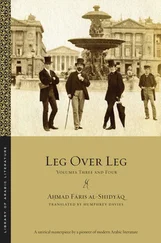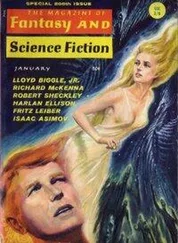But even the lisping narrator of these maqāmāt , “al-Hāwif ibn Hifām,” has his own textual doubles, in the form of the narrators of the most famous series of maqāmāt , ʿĪsā ibn Hishām and al-Ḥārith ibn Hammām. Indeed, as Humphrey Davies points out, the name in its “lisped” form is no name at all but may be translated as “Masher, son of Pulverizer.” At every turn, al-Shidyāq does violence to the very presumption of verisimilitude; word and thing never correspond neatly, even in the attempt simply to name a character. Instead, he holds up art and artifice as the substance that underlies the world and even constitutes it. To navigate it, one must travel not only through space but through texts; when one reads Leg over Leg one also reads those innumerable authors he quotes or invokes, like the authors of the maqāmāt , al-Hamadhānī and al-Ḥarīrī (“men who have rendered their reputations white by covering pages in black,” 1.1.1), or the English and French authors whom he quotes. It is no wonder that the text begins with eleven synonyms for the command, “be quiet!” (1.1.1), as al-Shidyāq attempts to speak alongside, and often over, the voices that crowd the text.
This multi-register and multi-lingual cacophony sets the stage for many of the travel narrative’s comic scenes, where intercultural encounters are not always entirely fungible. As in Tristram Shandy , its closest English analogue, communication more often leads to misunderstanding and misinterpretation than to understanding. The result can hardly be used as a guide for East — West relations but instead parodies intercultural communication and its institutional forms — chief among them Orientalist scholarship. If this period’s literature was partly looking to the West, what it saw was the West looking at it. Perhaps, then, there was no other way to write about that encounter than as a self-reflexive one. It looks to the West as a way to reflect on itself, not to imitate it but to critique and reformulate it. If we see Leg over Leg as an archive of Arabic literary modernity, we must take this double refraction into account.
What al-Shidyāq ultimately gives us in Leg over Leg is a theory of world literature — from a particular, Nahḍawī perspective. It imagines and constructs the world anew, through an omnivorous textuality, absorbing texts and literary forms through juxtaposition, quotation, imitation, and parody. Far from holding up Sterne or Lamartine as culturally distinct and inviolable paradigms, he incorporates them into Arabic literary categories, aligning Tristram Shandy with the maqāmāt . Rather than a choice between the two, or a straight line of filiation connecting them, literary history in al-Shidyāq appears as a winding one — modernity is staged on the road and does not always appear in the guise of “progress” (to use the language of modernity’s evil twin, modernization). It sometimes appears to move sideways, to digress.
As an alternative translation of the work’s subtitle allows, al-Faryāq’s travels track the ʿujm , or mistakes, of the Arabs and “non-Arabs” ( al-ʾaʿjām can also be translated as “barbarians,” or those whose speech is unintelligible to Arabic-speakers). Traveling along linguistic boundaries, al-Shidyāq pieces together an unruly patchwork of a text whose unity is in danger of disintegration, threatening to dissolve into mere ʿujmah , or “babble.” Leg over Leg thus creates a literary sphere that reminds us that the “world” in world literature is not a given; it must be manufactured. It is not merely “there” to be observed but is itself a dynamic constitutive process. It creates trouble — generic and otherwise — and it is always in danger of collapse. That is, world literature during the Nahḍah age is constructed out of the migrations and cross-fertilizations that define the era. Or, as the Fāriyāq reminds us, it was produced in the time of steamboats and railways, of “connecting the disconnected.”
Rebecca C. Johnson
Northwestern University
Al-Shidyāq’s biographers differ as to the date of his birth, with dates ranging from 1801 to 1805. We have used Geoffrey Roper’s calculations, based on al-Shidyāq’s British naturalization record submitted September 26, 1851, which lists his age as 45. Public Record Office, Home Office Papers — Naturalisation, 1278A, 26.9.1851.
1Nadia Al-Bagdadi, “The Cultural Function of Fiction: From the Bible to Libertine Literature. Historical Criticism and Social Critique in Aḥmad Fāris al-Šidyāq,” Arabica , 46, no. 3 (1999): 377.
2ʿAzīz al-ʿAẓmah and Fawwāz Ṭarābulsī, Aḥmad Fāris al-Shidyāq: Silsilat al-aʿmāl al-majhūlah (London: Riad El-Rayyes Books, 1995).
3See Ibrahim Abu-Lughod, The Arab Rediscovery of Europe: A Study in Cultural Encounters (Princeton: Princeton University Press, 1963).
4Examples of this opinion abound; see, for example, M. M. Badawi, A Critical Introduction to Modern Arabic Poetry (Cambridge: Cambridge University Press, 1975), 25.
5Samah Selim, The Novel and the Rural Imaginary in Egypt, 1880–1985 (New York: Routledge, 2004), 90.
6Timothy Mitchell, “The Stage of Modernity,” in Questions of Modernity , edited by Timothy Mitchell (Minneapolis: University of Minnesota Press, 2000), 24; see also Stephen Sheehi, Foundations of Modern Arab Identity (Gainesville: University of Florida Press, 2004).
7The following biographical information is taken largely from M. B. Alwan, “Aḥmad Fāris ash-Shidyāq and the West” (PhD diss., University of Indiana, 1970) and Geoffrey Roper, “Arabic Printing in Malta 1825–1845: Its History and Its Place in the Development of Print Culture in the Arab Middle East,” supplemented by archival research in the CMS Archives in Birmingham, UK.
8See, e.g., Muḥammad al-Hādī al-Maṭwī, Aḥmad Fāris al-Shidyāq, 1801–1887: Ḥayātuhu wa-āthāruhu wa-ārāʾuhu fī l-nahḍah al-ʿarabiyyah al-ḥadīthah , 2 vols. (Beirut: Dār al-Gharb al-Islāmī, 1989) and ʿImād al-Ṣulḥ, Aḥmad Fāris al-Shidyāq: Āthāruhu wa-ʿaṣruhu (Beirut: Shari-kat al-Maṭbūʿāt li-l-Tawzīʿ wa-l-Nashr, 1987).
9Ussama Makdisi, Artillery of Heaven: American Missionaries and the Failed Conversion of the Middle East (Ithaca: Cornell University Press, 2008), 114. For a complete account of the Asʿad al-Shidyāq affair, see Makdisi, 103–37, Buṭrus al-Bustānī, Qiṣṣat Asʿad al-Shidyāq (1860; Beirut: Dār al-Ḥamrāʾ, 1992) and Isaac Bird, The Martyr of Lebanon (Boston: American Tract Society, 1864).
10Makdisi, Artillery of Heaven , 127.
11Bird, Martyr of Lebanon , 145.
12Jurjī Zaydān, Tārīkh ādāb al-lugha al-ʿarabiyyah , vol. 16 of Muʾallaffāt Jurjī Zaydān al-Kāmilah (Beirut: Dār al-Jīl, 1982), 222. Originally published in 1911–13 by Maṭbaʿat al-Hilāl.
13Christopher Schlienz, letter to Society Secretary, 18 May 1827, Church Missionary Society Archives CMS/CMO 65/1, University of Birmingham Special Collections.
14The matter of al-Shidyāq’s two conversions is difficult to settle using archival sources. Though Theodor Müller writes that he has received a “confession of belief with which [he] was satisfied” from al-Shidyāq in 1832, his colleague, William Krusé, writes three years later that, in his opinion, “Fares… is not yet converted.” Theodor Müller to Christopher Schlienz, April 2, 1832, Church Missionary Society Archives CMS/CMO/65/20; William Krusé to Lay Secretary, January 25, 1835, Church Missionary Society Archives CMS/CMM 5/39. For references to the Fāriyāq’s beliefs, see 1.19.4 and 1.19.5: “[H]e concluded that, in view of his said perseverance and mild manners, the Bag-man must be following the right path and that the metropolitan, with his vehemence and eagerness to do evil, must be among the misguided. (1.19.4) So he said to the Bag-man, ‘Sir, I have heeded everything with which you’ve filled my ears and believe the truth to lie with you alone. I am your partisan, your follower, and the co-carrier of your bag.’” (1.19.5)
Читать дальше












